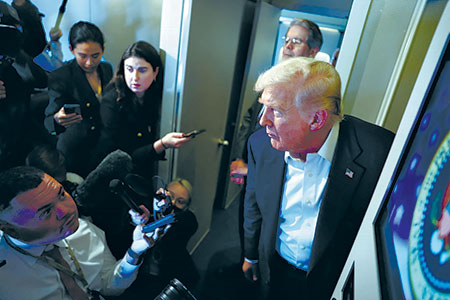
Two recent military aircraft incidents in the South China Sea, involving a fighter jet and a helicopter from the USS Nimitz aircraft carrier, have cast a stark light on the perilous high-stakes maneuvering undertaken by the United States to counter China’s growing influence in the strategically vital waterway. Occurring within a mere half-hour of each other, these crashes, though officially attributed to routine operations, underscore the volatile nature of the region and the unpredictable consequences that could arise from the intensifying geopolitical rivalry. Paradoxically, these escalating maritime tensions do not appear to be derailing crucial trade negotiations between Washington and Beijing, a testament to the complex and often contradictory dynamics defining their bilateral relationship.
The U.S. Pacific Fleet quickly confirmed the aircraft involved were an F/A-18F Super Hornet fighter and an MH-60R Sea Hawk helicopter, stating that the incidents occurred during routine flight operations, with pilots successfully recovered. While an investigation is underway to determine the cause, the timing and location amplify concerns. The U.S. routinely dispatches warships and aircraft to the South China Sea, one of the world’s busiest shipping lanes, ostensibly to uphold freedom of navigation. However, the underlying strategic objective is to prevent China from asserting unchallenged control over vast swathes of the sea claimed by Beijing, often overlapping with maritime zones of Vietnam, Brunei, Malaysia, Indonesia, and the Philippines. China bolsters these expansive claims through the construction of fortified outposts and airstrips on contested islands and reefs.
The presence of the USS Nimitz, one of the oldest active U.S. aircraft carriers, in the South China Sea signals more than just routine patrols. It serves as a stage for a high-stakes game of nerves between aviators from China, the U.S., and its allies. Reports from the United States, Australia, and Canada have frequently accused Chinese pilots of engaging in dangerously close maneuvers that risk mid-air collisions. In turn, Beijing has consistently accused these nations of encroaching on its security interests. A recent incident highlighted this friction, with the Australian Ministry of Defense reporting a Chinese fighter jet deploying a laser in close proximity to an Australian surveillance aircraft. China countered, asserting the Australian plane had unlawfully entered airspace over the disputed Paracel Islands.
Despite this alarming pattern of military encounters and escalating rhetoric, both Washington and Beijing appear to operate under a shared premise: that military confrontation at sea and in the air should not be allowed to impede vital economic cooperation. This nuanced approach was evident at the recent Association of Southeast Asian Nations (ASEAN) summit in Malaysia, where officials from both global powers engaged in high-level discussions. Reports indicate that a preliminary consensus was reached on key trade issues, including tariffs, paving the way for a potential breakthrough.
The ultimate endorsement of any trade deal is now anticipated from Presidents Donald Trump and Xi Jinping, who are scheduled to meet face-to-face at the upcoming Asia-Pacific Economic Cooperation (APEC) summit in South Korea this week. U.S. Trade Representative Jamie Jamison Greer confirmed that negotiators are finalizing the intricate details of an agreement for the leaders’ review and ultimate decision. Discussions also included the extension of a tariff truce, an earlier measure implemented this year to de-escalate the trade war. Chinese Chief Negotiator Li Chenggang described the talks as “deep,” revealing that a “preliminary consensus” had been achieved.
Adding to the cautiously optimistic outlook, U.S. Treasury Secretary Scott Bessent predicted a “fantastic” meeting between the two leaders. He underscored the tangible progress made, citing China’s agreement to resume significant purchases of U.S. soybeans. This particular concession represents a crucial political victory for President Trump, especially as the support of American farmers remains a significant factor in the domestic political landscape. The willingness of both global giants to compartmentalize their profound security differences from their economic interdependence showcases a pragmatic, albeit fragile, strategy to manage their complex relationship on the world stage.
